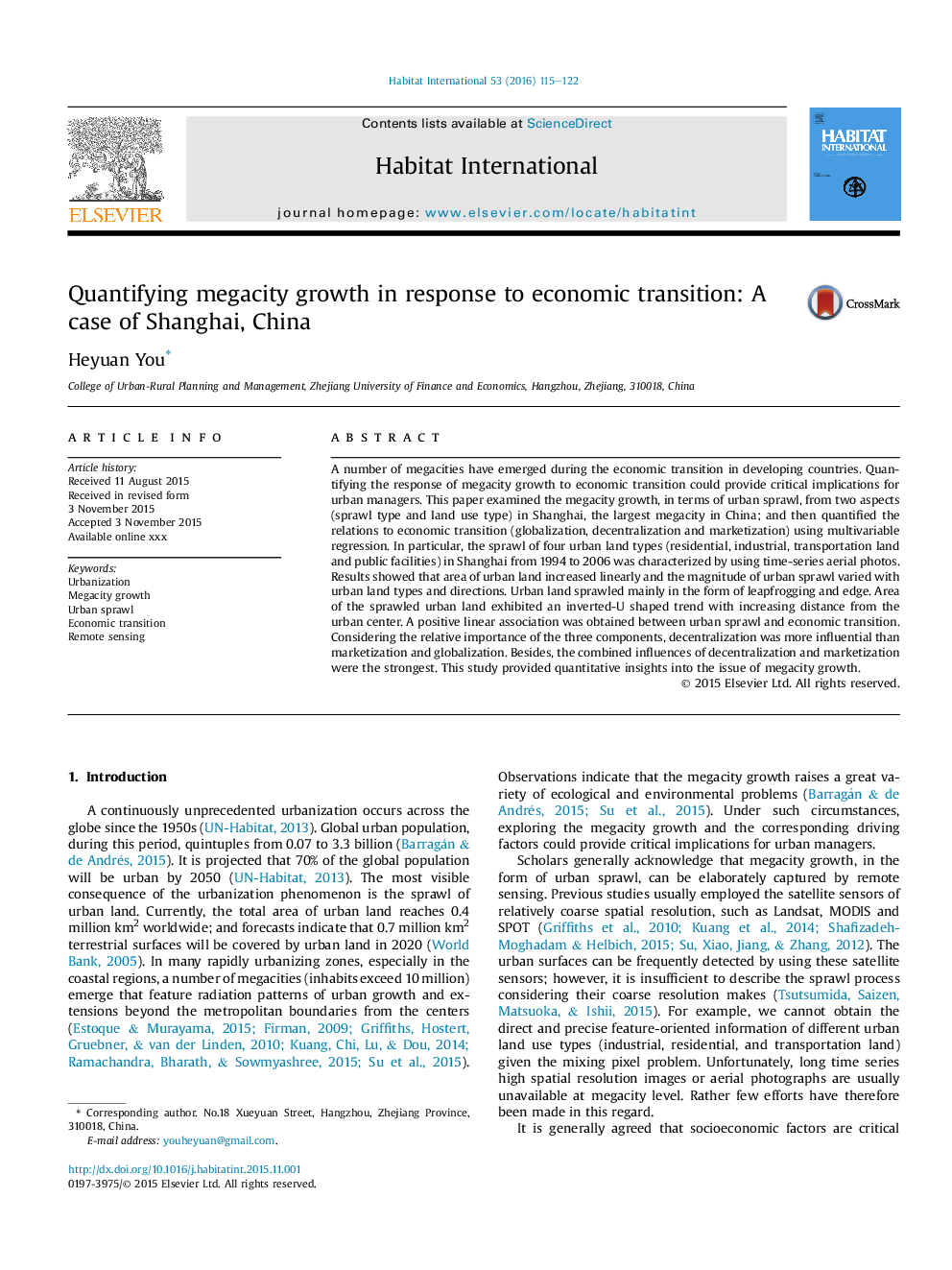| Article ID | Journal | Published Year | Pages | File Type |
|---|---|---|---|---|
| 7455553 | Habitat International | 2016 | 8 Pages |
Abstract
A number of megacities have emerged during the economic transition in developing countries. Quantifying the response of megacity growth to economic transition could provide critical implications for urban managers. This paper examined the megacity growth, in terms of urban sprawl, from two aspects (sprawl type and land use type) in Shanghai, the largest megacity in China; and then quantified the relations to economic transition (globalization, decentralization and marketization) using multivariable regression. In particular, the sprawl of four urban land types (residential, industrial, transportation land and public facilities) in Shanghai from 1994 to 2006 was characterized by using time-series aerial photos. Results showed that area of urban land increased linearly and the magnitude of urban sprawl varied with urban land types and directions. Urban land sprawled mainly in the form of leapfrogging and edge. Area of the sprawled urban land exhibited an inverted-U shaped trend with increasing distance from the urban center. A positive linear association was obtained between urban sprawl and economic transition. Considering the relative importance of the three components, decentralization was more influential than marketization and globalization. Besides, the combined influences of decentralization and marketization were the strongest. This study provided quantitative insights into the issue of megacity growth.
Related Topics
Social Sciences and Humanities
Social Sciences
Development
Authors
Heyuan You,
